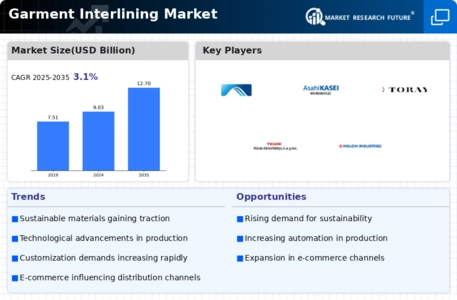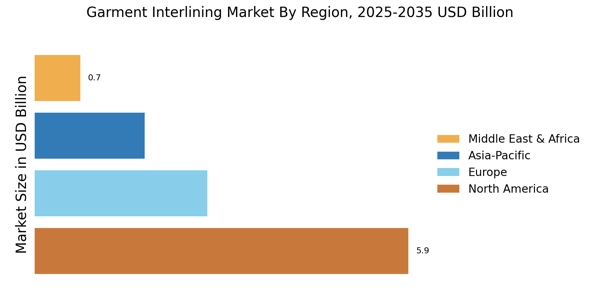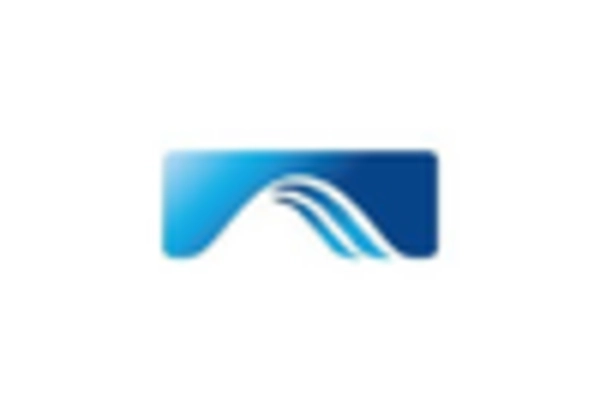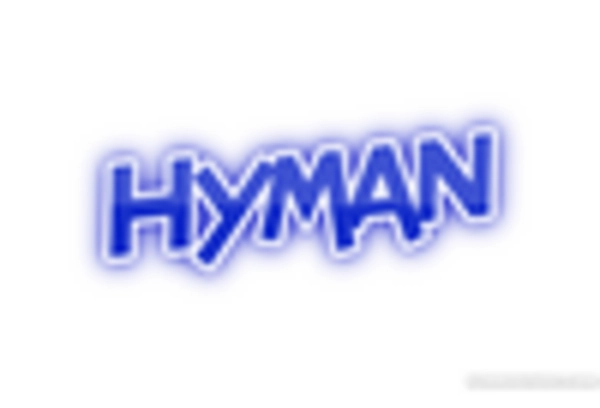The Garment Interlining Market is currently characterized by a dynamic competitive landscape, driven by innovation, sustainability, and regional expansion. Key players such as Freudenberg (DE), Prym (DE), and Huntsman (US) are actively shaping the market through strategic initiatives that emphasize product development and technological advancements. Freudenberg (DE), for instance, has positioned itself as a leader in sustainable interlining solutions, focusing on eco-friendly materials and processes. Meanwhile, Prym (DE) has been enhancing its operational capabilities through digital transformation, aiming to streamline production and improve customer engagement. Huntsman (US) is also notable for its commitment to innovation, particularly in developing high-performance interlining products that cater to the evolving demands of the fashion industry. Collectively, these strategies contribute to a competitive environment that prioritizes quality and sustainability over traditional price competition.
In terms of business tactics, companies are increasingly localizing manufacturing to reduce lead times and enhance supply chain efficiency. This approach appears to be a response to the growing demand for quick turnaround times in the fashion sector. The market structure is moderately fragmented, with several key players exerting influence while also facing competition from smaller, niche manufacturers. The collective actions of these major companies indicate a trend towards consolidation, as they seek to leverage economies of scale and enhance their market presence.
In August 2025, Freudenberg (DE) announced the launch of a new line of biodegradable interlining products, which underscores its commitment to sustainability. This strategic move not only aligns with global environmental trends but also positions Freudenberg as a frontrunner in eco-conscious manufacturing. The introduction of these products is likely to attract environmentally aware brands, thereby expanding Freudenberg's market share.
In September 2025, Prym (DE) unveiled a state-of-the-art digital platform designed to enhance customer interaction and streamline order processing. This initiative reflects Prym's focus on digital transformation, which is essential for maintaining competitiveness in an increasingly tech-driven market. By improving customer engagement through digital channels, Prym is likely to enhance customer loyalty and drive sales growth.
In October 2025, Huntsman (US) entered into a strategic partnership with a leading fashion brand to co-develop innovative interlining solutions tailored for high-performance apparel. This collaboration not only showcases Huntsman's commitment to innovation but also highlights the importance of strategic alliances in driving product development. Such partnerships are expected to foster creativity and accelerate the introduction of cutting-edge products to the market.
As of October 2025, the competitive trends in the Garment Interlining Market are increasingly defined by digitalization, sustainability, and the integration of advanced technologies such as AI. Strategic alliances are playing a crucial role in shaping the landscape, enabling companies to pool resources and expertise for enhanced innovation. Looking ahead, it is anticipated that competitive differentiation will evolve, with a pronounced shift from price-based competition to a focus on innovation, technology, and supply chain reliability. This evolution suggests that companies that prioritize these aspects will likely emerge as leaders in the market.


















Leave a Comment